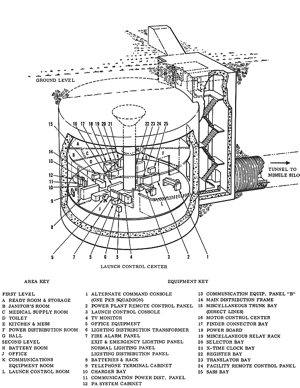His company, Hardened Structures, calls itself the "world leader in underground shelter systems."
While I can't attest to that, I do know that the company is highly regarded by everyone I've talked to while researching this story.
The construction management firm builds everything from prisons to schools to shopping malls. "We do it all," says Camden. "I work for the Army Corps of Engineers, we did a few hundred person shelter under the hospital in Kuwait last year. We've done work for the Jordanian government. We've done work for the Army Corps of Engineers, we do work for U.S. corporations and private individuals. We do work for the Air Force."
The various 2012 type scenarios that people believed might have seemed fantastic, but for someone like Camden, they are nothing more than a series of calculations.
"Once you determine the threat level, the threat event scenarios the facility has to be designed to mitigate, the occupant load, how many people are going to be in there, the assets that need protected — people, food, guns, gold, precious metals, plants, hydroponics — what are the putting in there? How long? How long are you going to stay in there? That determines your cubic footage for storage. Once we understand all of that, it's straight engineering and physics. [Once] we understand the program that the client needs us to design, it's basically the same concept, the same approach that an architectural design team would use if we were designing a shopping center, let's say."
The important thing, says Camden, is that the client can articulate the "threat event scenario," or the specific dangers they wish to mitigate.
 According to Camden, an underground reinforced concrete bunker will have walls between 14 to 24 inches thick, with a a ceiling anywhere from 18 to 36 inches thick.
According to Camden, an underground reinforced concrete bunker will have walls between 14 to 24 inches thick, with a a ceiling anywhere from 18 to 36 inches thick.
The level of EMP protection is also a factor. EMP, or electromagnetic pulse, is the electromagnetic radiation that accompanies a nuclear explosion. Effects from EMP vary, but if you get a high enough dose it will damage your electronic equipment. If you have a pacemaker, you'll want to shield the entire shelter with conductive material which, Camden notes, "is very expensive." If you're trying to save a few bucks you can probably get away with just shielding the electrical systems and points of entry.
Aside from nukes, common threat event scenarios include tidal waves or global flooding.
In the event of a massive flood, the bunker engineer has to account for things like the shelter's occupant load and the amount of time the occupants plan on spending there. "[W]e have to put in CO2 scrubbers and oxygen machines. You calculate, with a thousand foot wave going over top, at 500 feet, how long will it take that water to reside. Is it 100 hours, 200 hours, 300 hours? Whatever the case is, and we calculate that, then we double for a safety factor. But even with that you still have to include self-rescue supplies in the shelter. If they believe you're going to be completely underwater, you must assume that the tidal wave may never reside. In other words, you're going to be underwater constantly. If that's the case, how do you get out? And there's design secrets, proprietary stuff that we do, that get the clients out.
"In 2012 type scenario's, those are the big cost-driven factors right there. After that, what determines the cost is geotechnical conditions. What are you going to hit when you go into the ground. Are you going to hit rock? Bedrock? Are you going to hit water? Can we just use a hammer drill and excavate, or [do we have to] blast? Those are cost aspects. Is there an access road? Do we have to put a road in? Are there utilities there? Can we get water up there? Can we drill for a well?
"After doing this for twenty years, it's not rocket science."

